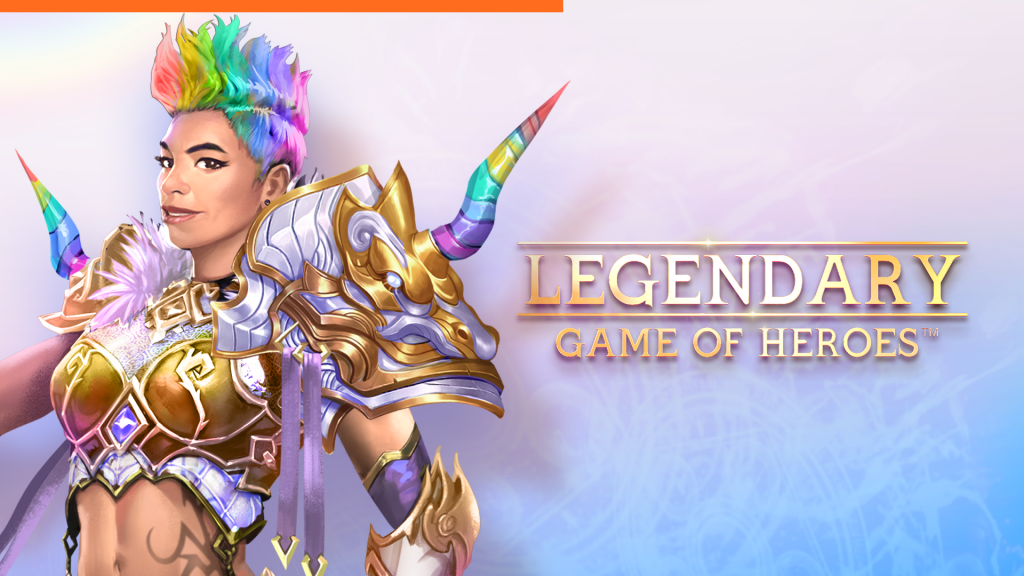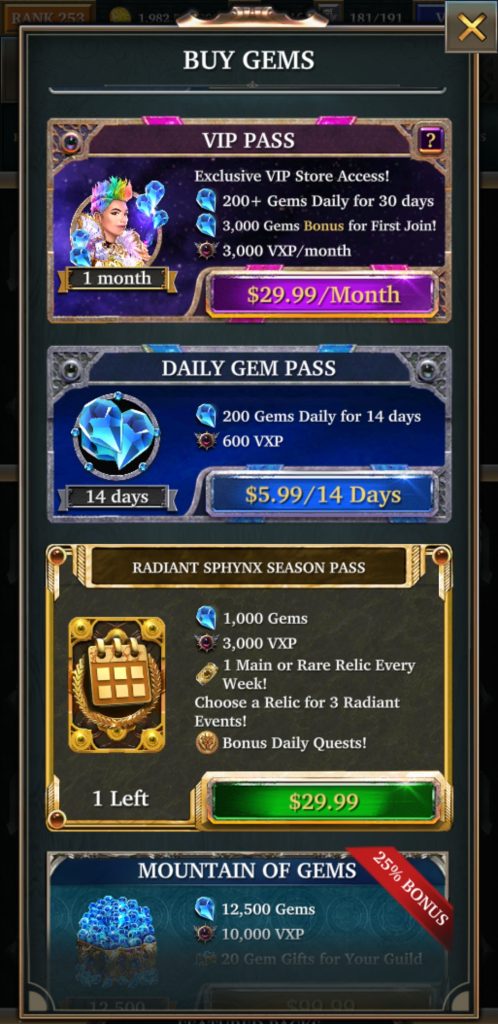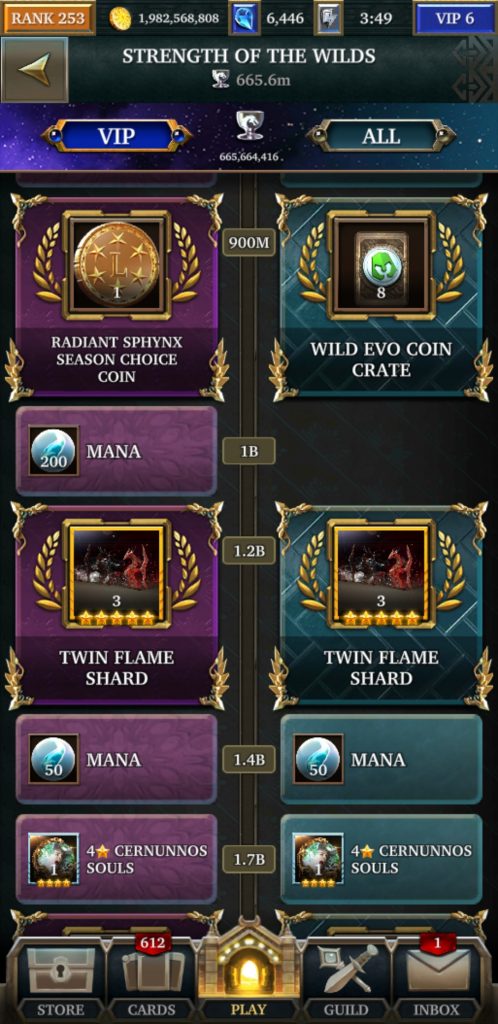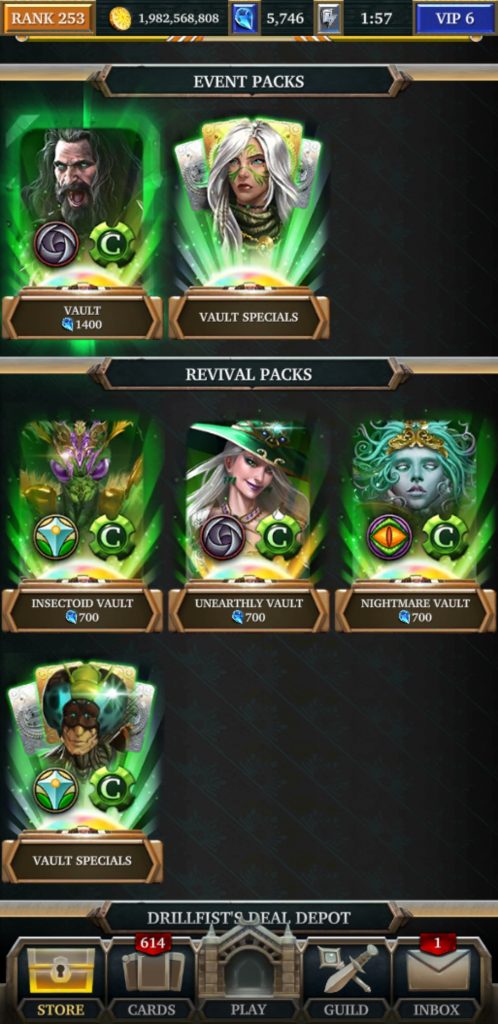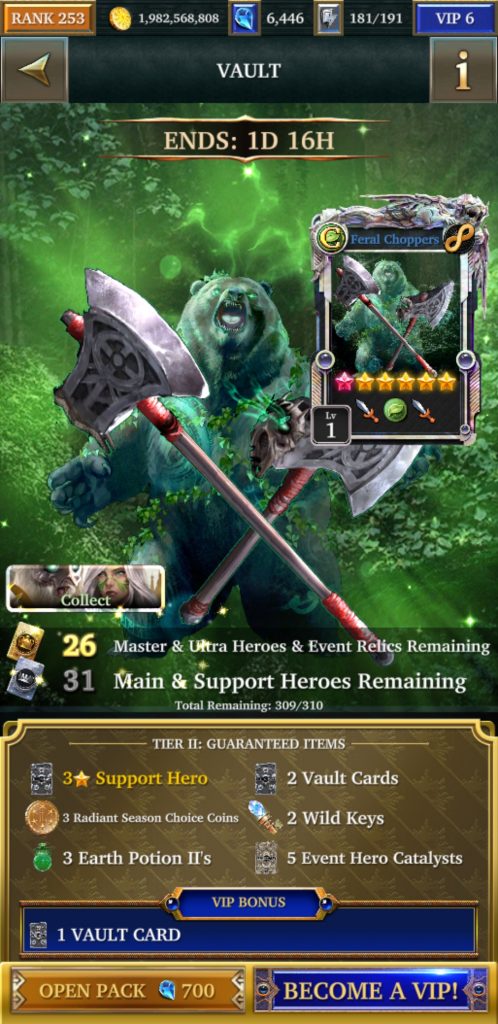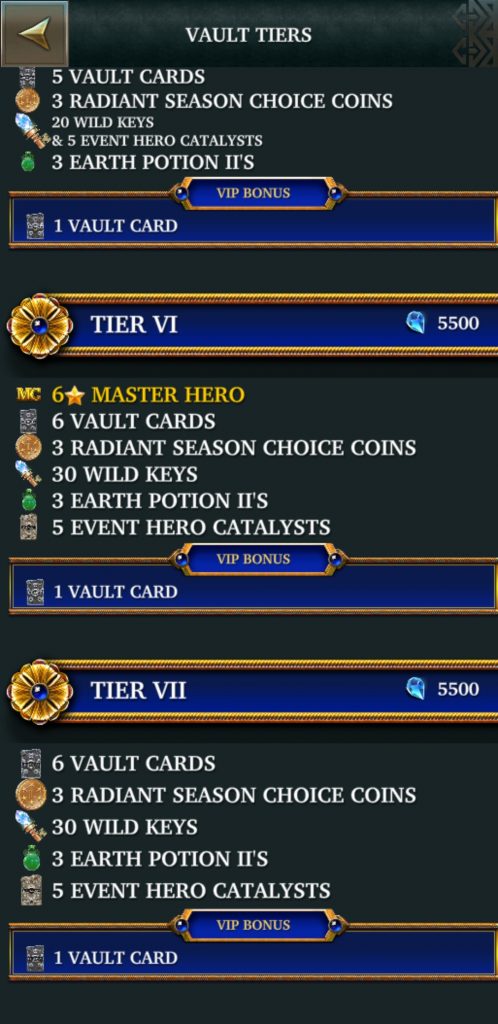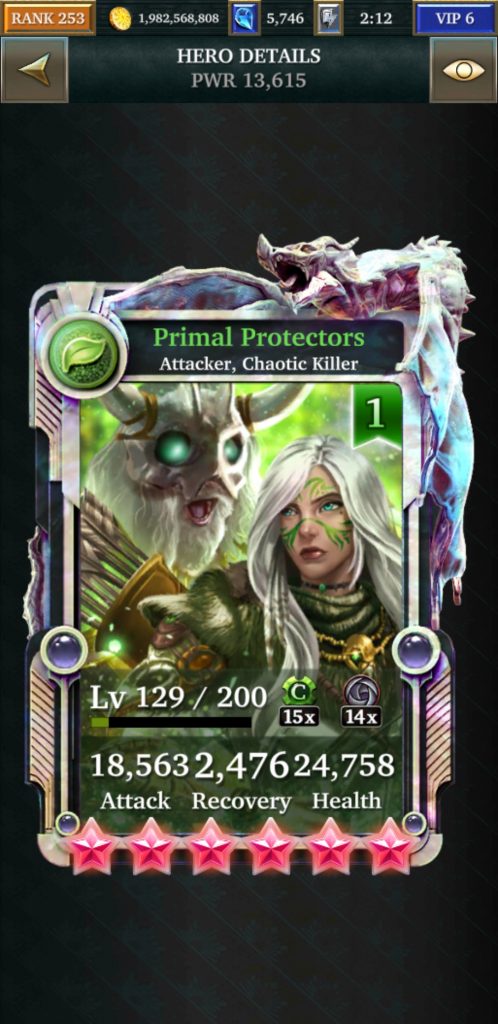Welcome to ‘Is it Pay to Win’ – a column where we examine a game and decide if that game is has aspects of pay to win and to what extent. Check out Is it Pay to Win?: Defined to see how we break down the components of pay to win, such as pay for advantage, pay for convenience, and cosmetics.
Legendary: Game of Heroes marketed as a free to play, match-3, card collecting, RPG for Android and iOS. Right away, you’ll probably notice some of those details indicate purchases. Mobile games are notoriously heavy-handed with their cash shops and card collection games are essentially pay to win by default in that, since their physical ancestors such as Magic: The Gathering, you spend cash to buy packs of cards. LGOH is no exception.
Scoring:
- Pay for Power: 5/5
- Pay for Advantage: 5/5
- Pay for Convenience: 4/5
- Pay for Cosmetics: 3/5
- Pay to Win: 4.6/5*
Keep reading to see a rough game description and our basis for these scores.
The main mechanic of LGOH is building decks of 5 cards, each with their own stats, passive abilities and active abilities. The match-3 game play comes in as matching gems actives the attack portion of each of the cards, fills the progress bar to ready an active ability, and often is what triggers their passive. The more gems matched the more damage done, the more progress filled towards the actives and eventually you kill the opponent (or die if they out damage you).
Gameplay:
The game contains PVP in the form of guild vs guild battles where you attack the opponents preset defense deck, and in PVE with weekly events, daily dungeons, a long but repetitive campaign and some other mini-games.
Weekly Events: This is, for most, probably the main game play loop of Legendary and is the principle way of earning rewards, even for GVG. Each week the event rotates element type and killer skill type and event type (these “types” have changed over time, but there’s always at least 3 different ones). Using the correct element and killer skill massively increases your power during those events and are the only way to compete even at a middling level. There are 5 element affinities, 5 killer skills, and 2 event types. That means each combination only exists once every 50 weeks. If you do not have the cards that match the right element, killer skill, and event type you can do more than 100x less damage than someone with the right stuff.
Monetization:
Most of the time, your cash goes to buy gems (separate from the kind you match), gems are then used to buy the packs of cards in game. Some example prices (in USD) of gems are as follows:
- Large Gem Pack: $49.99 – 7500 gems
- Daily Gem Pass: $5.99 – 14 days of 200 gems or 2400 gems
- Bag of Gems: $9.99 – 1150 gems
VIP: This monthly fee of $29.99 USD gives 205 gems daily or 6150 gems, plus a daily amount of some other currencies, the ability to skip ads in certain places, extra rewards from the weekly events and occasionally access to exclusive items.
Weekly Event Packs: These are bought with gems, but, outside of VIP, are the main source of monetization within the game. Since you must have the right combination of attributes for each week in the 50 week rotation, purchasing packs each week is necessary. And, while you can get some gems in game for free by participating in events, the amount you get will be paltry relative to the cost of packs – particularly if you don’t have a great deck for the week and an active powerful guild as well.
Unlike traditional CCGs, packs are not of a fixed price. Each “tier” increases in cost and changes in content, with some tiers offering guaranteed items and some not. The tier costs are:
- Tier 1: 300 gems
- Tier 2: 700 gems
- Tier 3: 1400 gems
- Tier 4: 2500 gems
- Tier 5: 5000 gems
- Tier 6: 5500 gems
- Tier 7: 5500 gems
Just going through all of the tiers would cost roughly ~$140.00 in gems and does not guarantee you the full deck for the week (let alone a fully upgraded version) because most of the content of the packs is random and vast majority of drops are junk (not just bad cards, actual junk that has no value or use).
Other: Occasionally they sell cards for cash directly, packs for cash directly, and they have some non-weekly packs and things to buy that have near zero value to the player and are mostly bait for new players to spend their early game gems on.
Pay for Power: 5/5. Cash buys gems, gems buy the packs which have the cards that are the near exclusive source of power in game. It is impossible to get a full set of upgraded cards each event without spending substantial amounts of money.
Pay for Advantage: 5/5. VIP giving extra currencies daily, including energy and other related tokens help the player progress faster. Additional, since VIP nearly doubles the rewards you gain from the event (not to mention the gems), VIP is a significant pay for advantage.
Pay for Convenience: 4/5. As the game evolves, the scope of convenience that VIP gives varies. At one point events gave a currency which was unique to that week and bought only one thing which upgraded that weeks cards. Non-VIP players could only spend a low amount of that currency per click, VIP players could convert the currency to the item significantly faster – a system that served no purpose but to send players to VIP to save time. Now, VIP lets you reroll your upgrade chances and get extra tries in certain content without having to watch an ad or pay gems, providing meaningful time savings (or better upgrades if you might have not taken the time). VIP smooths out game blockages that are intentionally added as frustration points.
Pay for Cosmetics: 3/5. This one felt a little complicated. There aren’t really cosmetics that don’t have power associated with them. There are very few skins were added that are easier to get via paying money in a pay for advantage way. For the most part, though, the card artwork is the cosmetic being collected. In this case, you can earn, through game play most of the card appearances. However, spending money provides advantage or direct access to that. Since you can both earn and buy the same cosmetics, it’s been given a middle of the road score.
Summary and Verdict:
With the pay for power and advantage categories having a maximum score, along with the knowledge that getting the very best in this game is impossible without using real life money we’ve determined Legendary: Game of Heroes to be truly: Pay to Win.
*For determining the total pay to win score, power is weighted by 3x and advantage by 2x. In this way, a game that has a 5 pay for power, 1 advantage, 1 convenience, 1 cosmetic would have a higher P2W score than 1 for power, 1 advantage, 1 convenience, 5 cosmetic. Most of our experience and opinion is that pay for power and advantage are more important when considering “pay to win” than the convenience or cosmetic aspects, but all aspects should still count in their own way.
Review Completed on 10/13/2020
